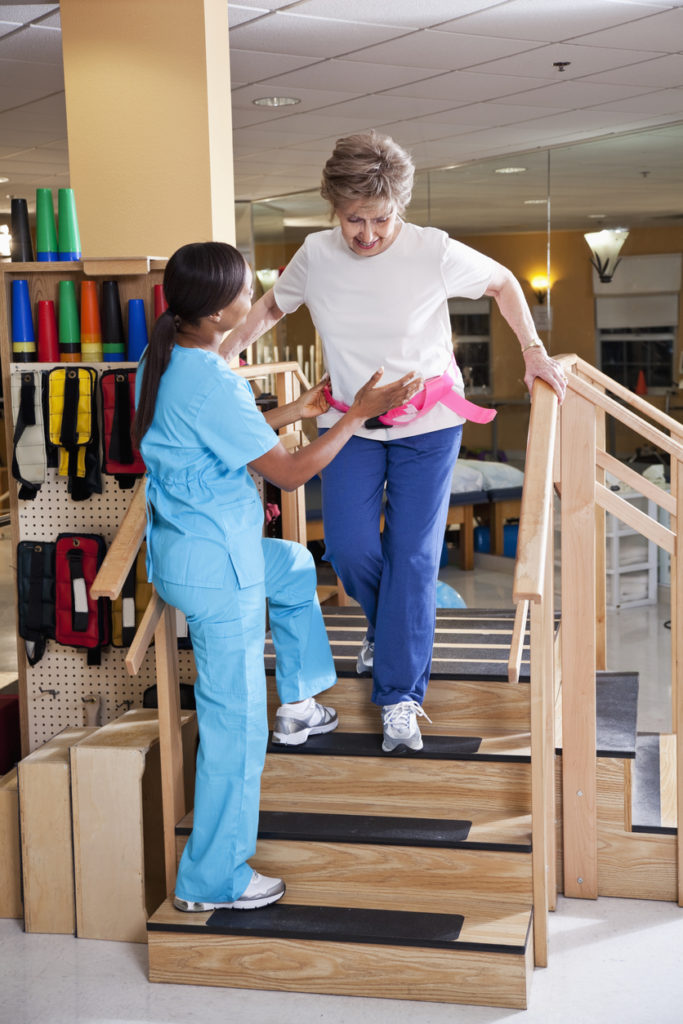
1. Understand the Purpose
Therapy will begin in the hospital and continue for several weeks after surgery. After a hip or knee replacement, rehabilitation usually includes both physical and occupational therapy. But why is it so important? Rehabilitation will help you:
- Restore normal movement in your joint
- Build strength in the joint and surrounding muscles
- Reduce pain and swelling
- Prepare you to return to normal activities
- Help with circulation and assist in avoiding blood clots
2. Measure Progress
Be sure your rehabilitation provider shows you a written plan for therapy. Your plan should include how many days a week you will receive therapy and for how long, as well as specific goals. Goals may include things like walking without a walker or cane, walking up and down stairs, or dressing without help. Your therapists should monitor your progress in reaching goals and adjust the therapy plan if needed.
3. Take the Passenger Seat
Typically, if you have had a total joint replacement, you will not be allowed to drive for a number of weeks. Be sure you have someone who can take you to appointments and help with necessities such as the grocery store or drugstore. You should also have your therapist show you ways to get in and out of the car safely so you don’t injure your joint.
4. Persevere
You may feel sore or tired after your therapy, but don’t give up. Completing all of your prescribed therapy sessions will help you reach your goals for greater mobility. You should be able to walk longer distances without getting tired and complete more tasks independently as you progress.
5. Plan Ahead
You can make a rehabilitation plan and select your rehabilitation provider before surgery. You will need to decide if you will receive rehabilitation at home or at a center designed to provide therapy and care for patients after surgery. This decision may depend on if you live alone, your overall health, and design factors in your home, such as stairs. If you would benefit from short-term therapy in a rehabilitation care center, you may be able to book your rehabilitation stay prior to surgery. Planning ahead will make it easier to focus on your recovery and help you approach your surgery with confidence.
How to Choose a Rehabilitation Provider
There are many factors to consider in choosing a rehabilitation provider after surgery. Discover questions to ask potential providers, how to assess your home for safety and mobility, and signs of quality rehabilitation services in Pennybyrn’s free e-book, The Road Back to Mobility: Selecting Short-Term Rehabilitation Services. Download your copy today.

